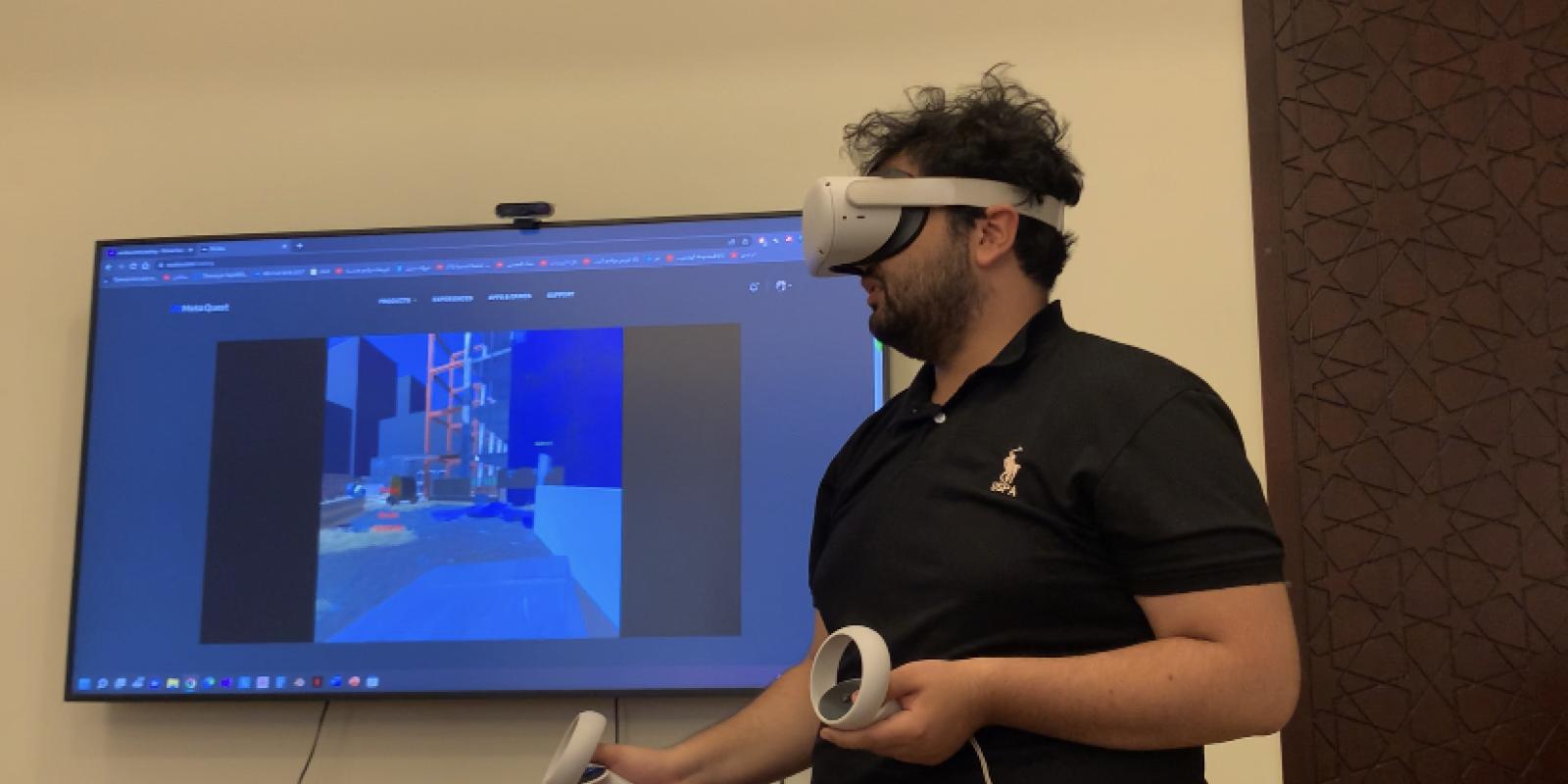
AUC Team Develops Construction Engineering Safety Training Using Virtual Reality
Using virtual reality (VR), construction engineering faculty members and graduate students at The American University in Cairo (AUC) developed and deployed training models to enhance safety on construction sites. These training models allow construction engineering students to navigate construction sites of bridges and high-rise buildings using VR headsets to visualize the associated hazards, including falls, struck-by, slips and general construction site safety.
“We have high fatalities in the construction industry worldwide. Recent studies showed that around 60,000 fatalities occur annually worldwide due to construction accidents. It is not anymore about time, cost and quality but also about safety in the workplace,” said Ossama Hosny, professor of construction engineering at AUC.
Ibrahim Abotaleb, assistant professor of construction engineering at AUC, said: “Traditionally, students would learn about safety on construction sites through lectures and textbooks, yet we have developed new AR and VR-based safety training programs that address the potential hazards associated with some of the riskiest projects in the construction world.” Abotaleb added that based on earlier studies, “it was found that the lack of proper training is the main cause of on-site construction fatalities, so even with an unsafe construction sites, proper training can help save lives.”
Construction VR training programs are steadily making their way in the construction industry worldwide instigating research on the effectiveness of the VR training in comparison to the traditional industry training.
The results of the experimental testing of AUC’s models indicated statistical significance in their effectiveness in enhancing students’ understanding and visualization. The testing compared the performance of senior construction engineering students who received the training to those who didn’t take the VR training.
Research on the safety training models was presented in the Construction Research Congress by the American Society of Civil Engineers in Virginia, USA, and in the Canadian Society for Civil Engineering Conference in British Columbia, Canada. It was also published in the Journal of Computer Applications in Engineering Education.
According to Abotaleb, “based on the results of our studies, the models we developed performed better in terms of visualization, immersion, realism and ability to enhance the desired hazard identification and mitigation skills compared to traditional training programs.” Abotaleb added: “The developed models are the first in the world to integrate adult learning theories abstracted from psychology into full training modules specialized in high-rise buildings and bridges.”
During the development process of the VR models, the team interviewed professional safety inspectors to validate the model’s capabilities and give their insights for further development.
Working on a full safety model for high-rise buildings construction as part of her thesis research, construction engineering graduate student Sahar Bader focused on the behavioral aspect of training and incorporated learning theories to develop a sound methodology to include motivation, reputation and a problem-solving approach to the training.
As part of his master’s thesis, Mohamed Sherif - a graduate student and research assistant – has combined virtual reality (VR) and augmented reality (AR) in an innovative framework to provide an immersive safety training model for the construction of bridges and highways, due to their significance in the Egyptian national projects.
It isn’t the first time for the construction engineering department to introduce VR in their teaching models. During the COVID lockdown, Abotaleb managed to provide his students with the whole experience of field trips to construction sites while in the safety of their homes. He used VR by going to construction sites with a 360-degree camera to record the surroundings, interview on site workers, and deliver lectures as if the students were there with him.
Hosny also has incorporated VR in one of his courses to allow students to better identify the risks associated with the safety aspects of high-rise construction and to find ways to avoid and mitigate their consequences.